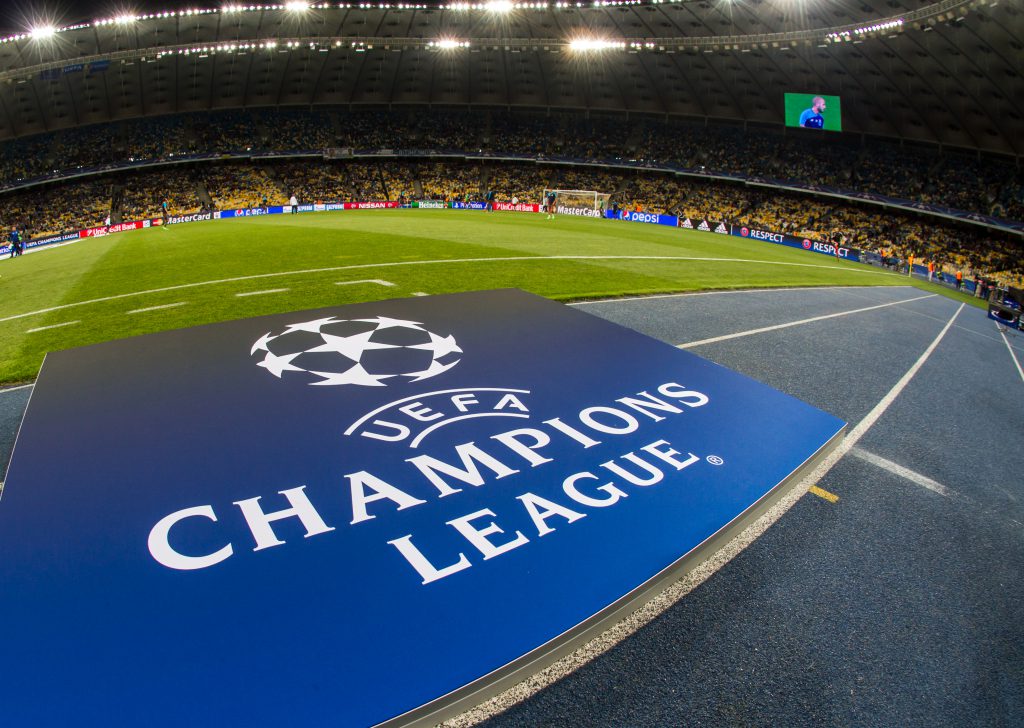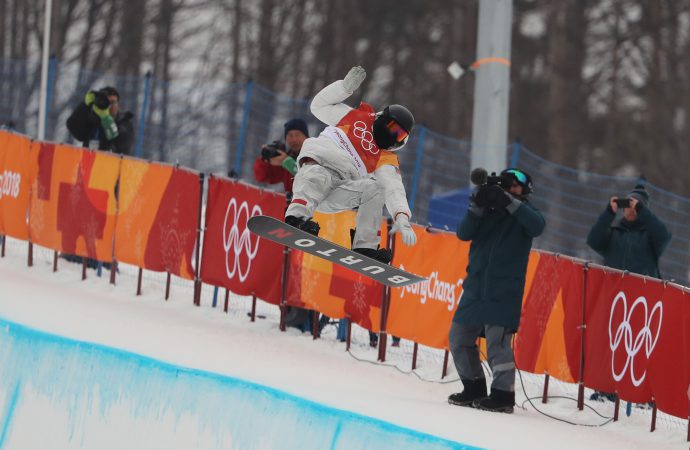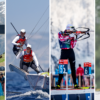The IOC, UEFA and The Ocean Race have come together to explore the environmental impact of signs and visual marketing at events, and develop solutions to this complex problem
They’re absolutely everywhere and rarely given a second thought. But without them, spectators could lose context or, in a worst-case scenario, a crucial piece of information to get them to their desired locations in a fast and safe manner.
Banners and signage, however, account for a significant proportion of the waste associated with sports events – particularly single-use plastic. And, because of their complex composition, much of the signage produced for an event is not recyclable or reusable.
Major sports organisations that have committed to reducing their negative environmental impacts are faced with a complex set of scenarios to negotiate. At the heart of the problem is a “knowledge gap” in which the rights-holder (and even the supplier) hold little information about how the assets were produced, and how they can be responsibly handled at once they are no longer needed in their initial guise.
The International Olympic Committee, UEFA and The Ocean Race have thrown their collective weight behind finding a solution. Essentially, data needs to be collected from suppliers, contractors and subcontractors so that sports federations and event organising committees can paint a picture of the inventory they have, the environmental impacts they generate over the course of their life (from production to end-of-life), and how they can improve all aspects.
Following a workshop hosted by The Ocean Race during its May 2020 Ocean Summit (which was delivered virtually as a consequence of the Covid-19 pandemic), the parties decided to establish a guide with the support of sustainability consultancy Anthesis, designed to help users determine the environmental impact of branding and signage at events.
As well as “compiling and comparing lifecycle data” for signage, branding and overlay materials, the document was produced to “help guide decisions” around sourcing and end of life management.
For UEFA, which organises events in-house, the guide is mainly an internal tool, while the IOC wants to document to support the wider Olympic Movement, such as International Federations, as they prepare their own events. However, both are motivated by the ambition to positively impact the branding and signage industry, and put “pressure” on the handful of organisations that provide these types of products for major events.
But according to Lise Van Long, corporate sustainability senior manager at the IOC, and David Broere, formerly the event operations and signage coordinator for UEFA (now event manager, speed skating, at the International Skating Union), complexity still remains.
“There are a lot of questions about what is currently on the market,” Van Long tells The Sustainability Report. “Another big question is around the environmental impact of solutions that are marketed as ‘more sustainable’. We don’t have a lot of data.”
Broere adds: “There’s a huge knowledge gap. Some suppliers are selling us ‘eco-friendly’ products with a nice price tag, but without the credible data behind it. We know what materials we are using, but we couldn’t find the answers to lifecycle assessments, the carbon footprint, the toxicity, the water, without the help of an independent voice.”
Anthesis analysed the lifecycle of more than 40 different types of material commonly used in signage and branding products, such as fluted plastic boards, foamboards, transparent boards (signage); PVC banners, non-PVC banners (flexible graphics); structural materials (structures); and flooring.
Each product was assessed for climate change impacts, water usage and toxicity, as well as recyclability, circularity and end-of-life.

Some products are more sustainable from one point of view, but totally unsustainable when assessed against another metric. For example, aluminium sheets used to create durable signage boards are rated as high in terms of climate impact, but are well designed for reuse or recycling. Conversely, plywood board has little impact on climate change but presents significant challenges when it comes to recyclability and end-of-life.
The picture becomes even murkier when two or more materials are used to create one product, as is common for signage, making recycling or reuse extremely difficult.
“I think the biggest finding was really that materials used in signage are multi-layered – they’re compounds made of plastics and metal, and sometimes different types of plastics,” Broere explains.
Some other materials, such as PVC, can hinder the recycling of other plastics like PET, while its chlorine content poses threats to human health. Van Long adds that the initial inventory aspect of the project, where the separate materials were stripped out and explained in terms of their environmental impact, was “extremely useful” – but really demonstrated the difficult task at hand when it comes to genuine recycling and reuse options.
“The study confirmed that there are very few true recycling options for banners,” she says. “It’s something we need to investigate further. Using recycled plastic is generally better in terms of environmental footprint, but we can now see what the impact is of using recycled plastic versus virgin plastic.
“We looked at bio-based materials that, in general, have a lower impact, but there are still a lot of aspects to be optimised.”
While bio-based materials like wood and hemp have adopted the ‘sustainable option’ mantra because of their ability to biodegrade, their use and production can “have quite a high footprint”, while some products labelled as bio-based can still include some plastic elements.
As part of the report, Anthesis provided a “supply chain stewardship” checklist that sports entities can use to optimise their banner and signage procurement process. The first step on that journey is to “rethink” and ask if the product is necessary. Once its necessity has been confirmed it should be produced in a minimal fashion (through weight or size reduction) and potentially with materials that have already been used at previous events.
The product should be designed for reuse – with reuse partners identified before production – and/or recyclable, with its recycling roadmap set out and understood.
It also offers a set of questions purchasers can ask suppliers to become more informed about the environmental impact of the banner and signage products they’re buying. They could ask for evidence of environmental certification or accreditation, a materials datasheet (showing chemicals, water and energy used in production), whether the supplier has “visibility” of upstream suppliers, the impacts of raw material sourcing, transportation distances, and whether inks or adhesives will have an impact on the recycling process.
Van Long adds that sports federations and event organising committees can accelerate these practices by placing requirements into tenders – in other words, if suppliers can’t adhere to environmental requirements, directly and through their upstream suppliers, then they won’t win contracts.
This may be a challenge as only a handful of companies are capable of producing banner and signage products to the scale and quality required for major sporting events, potentially giving the sports organisations less leverage on this topic. But Van Long is confident that there is “room for innovation”, with big players potentially collaborating with smaller companies or start-ups to find solutions.
“Smaller, niche companies will pop up with innovative solutions, but in reality, you won’t ask 55 micro-suppliers to brand your event,” Broere says. “The big suppliers are going to need to incorporate their technologies, and I think that’s where the push will really come.”
Get more exclusive content like this by signing up for our newsletter here.










2 Comments
Giles Stanford
May 13, 2021, 1:40 pmhttps://www.sportbusiness.com/2021/03/giles-stanford-12-steps-to-make-sports-events-more-sustainable/
Great article, I published some thoughts along the same lines. There are challenges, but progress is being made. The work done by the IOC, UEFA and Ocean Race is very helpful..
REPLYDanielle Boiston@Giles Stanford
May 15, 2021, 10:06 amExtremely useful advice. Is the guide mentioned widely available for all event organizers?
REPLYThanks to Giles Stanford for sharing your thoughts too!